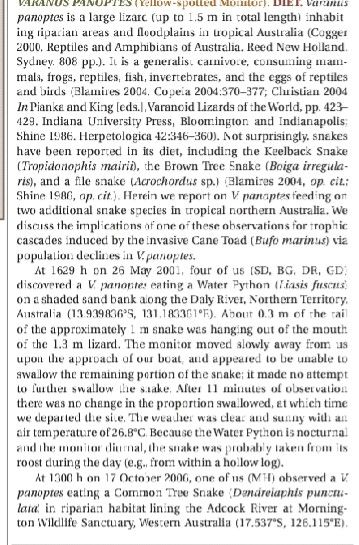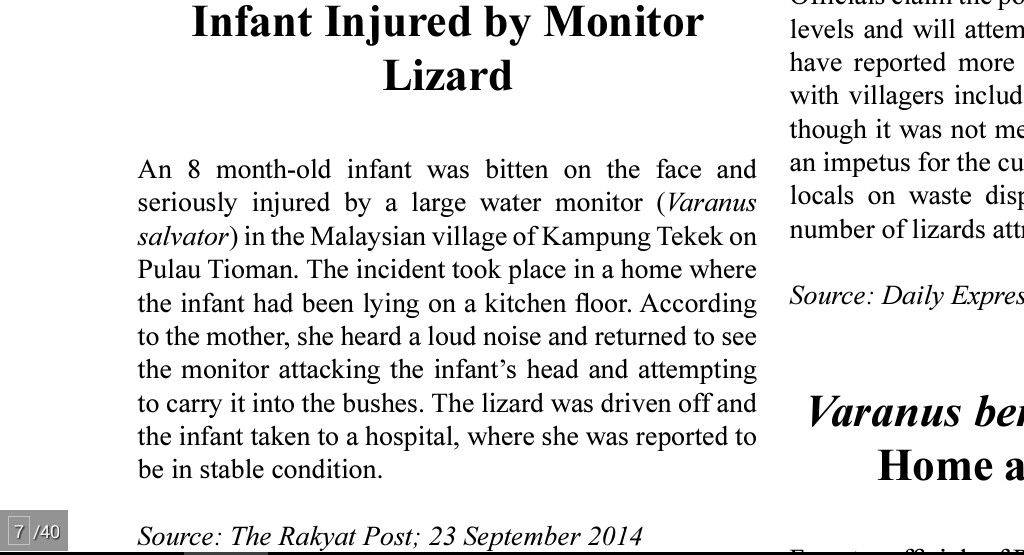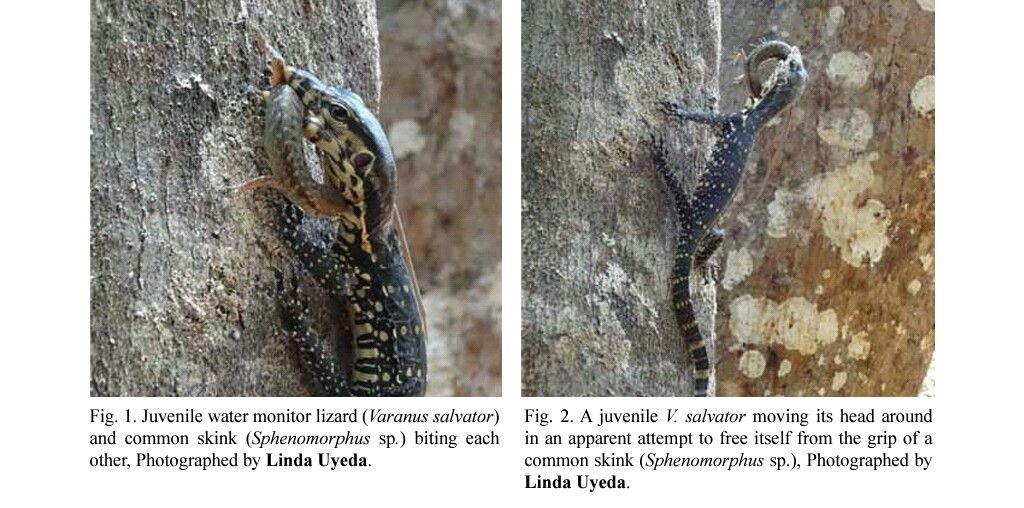Some accounts of predation I've amassed over the last while

Giant perentie lizard snacks on kitten at Kings Canyon

i
An unlucky Alice Springs kitten must have used the last of its nine lives when it came up against a hungry goanna at Kings Canyon.
When German tourist Carsten Leppert was confronted with the grisly scene, the goanna had already begun to tackle the alfresco feline feast.
“The mamma cat was just sitting a few metres away watching the goanna eat her kitten for lunch,” Mr Leppert said.
“I guess you could say this was native nature striking back.”
Leppert managed to take two photos before the goanna took off with its moggy snack.
“It disappeared under a building and I wasn’t going any closer to it,” he said.
Scott Pullyblank, curator of life sciences at the Alice Springs Desert Park said the lizard was a perentie, one of the goanna species commonly found in the Alice Springs region.
“They’re opportunist that have adapted to eating other reptiles and they will snack on things already dead,” he said.
“But they are quite capable of killing a cat.”
Perenties are the world’s second largest lizards and can grow to 2.5m in length.
Mr Pullyblank said people should respect the carnivorous reptiles and keep their distance.
“You never quite know what they’re going to do — there are reports of perenties climbing up people thinking they’re trees,” he said.
link
Attack on a young child(which I was previously unaware of), and a young V.Salvator predation a skink

Juvie predation on common skink
"The water monitor lizard, Varanus salvator, is a scavenger and generalist predator known to consume a wide variety of prey (Gaulke & Horn, 2004). Although insects have been documented as the primary diet of juvenile V. salvator (Gaulke, 1991; Traeholt, 1994), juvenile V. salvator may also hunt small animals such as skinks and frogs (Gaulke, 1991; Losos & Greene, 1988). Here, we note an observation of a juvenile V. salvator preying on a common skink (Sphenomorphus sp.) On 17 September 2014 at approximately 1240 h, a juvenile (ca. 0.5 m total length) V. salvator was observed on a tree on Tinjil Island, Indonesia with a common skink (Sphenomorphus sp.) in its mouth. Upon closer observation, it became clear that the skink also held a section of the V. salvator’s gular area in its mouth (Fig.1). Both individuals remained motionless for several minutes, after which time the V. salvator reared back and shook its head back and forth in what appeared to be an attempt to shake the skink free. Unsuccessful, the V. salvator continued approximately 5 m further up the tree with the skink still in its mouth and with the skink’s mouth still gripping its gular area. The V. salvator was then observed maneuvering its head back and forth again, followed by apparent attempts to swallow the skink. Although the V. salvator was partially obscured by the tree by this point in the observation, the tail of the skink was still visible. At 1300 h, approximately 20 minutes after the start of the observation, the V. salvator moved to a location where it could not be seen, and the observation was concluded. Consumption of the skink was not observed."
